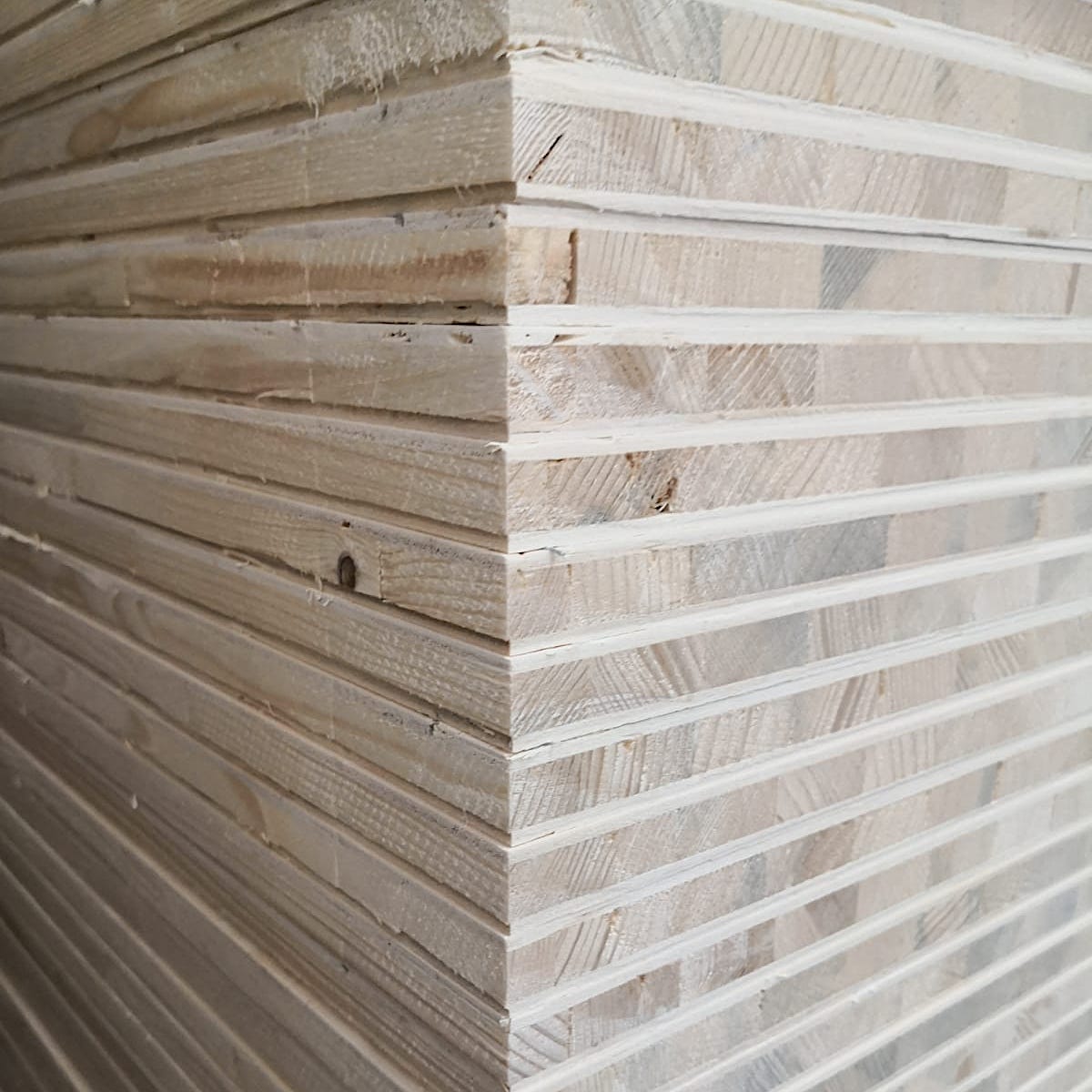 Blockboard (aka lumber core) is well known worldwide due to its characteristics of bending strength, lightness and screw-hold ability. As it’s a real solid-wood alternative to timber, suitable for the production of high-quality and long-lasting furniture and furnishings. It is commonly used for shutters (also with large dimensions), structural components (shoulders), long book shelves, partition walls and cabinet-making.
Blockboard (aka lumber core) is well known worldwide due to its characteristics of bending strength, lightness and screw-hold ability. As it’s a real solid-wood alternative to timber, suitable for the production of high-quality and long-lasting furniture and furnishings. It is commonly used for shutters (also with large dimensions), structural components (shoulders), long book shelves, partition walls and cabinet-making.
While most blockboard manufacturers worldwide are producing a 3-ply construction, in Italy it has been developed in the 5-ply construction, with two veneers on each side, in order to achieve the best surface stability and flatness.
Trade names
Blockboard, lumber core, lumber core plywood, commercial block board, Manufactured Board, single core board, Block Composite Board, battenboard, Tischlerplatte, Stabsperrholz, PDP, Mebloplato, Meubelplaat, Meubelpanelen, panneaux latté, alistonado, painel lamelado, listellare, panforte, paniforte a listelli.
 Features and advantages
Features and advantages
– Excellent dimensional stability and moisture resistance.
– High bending strength.
– Light weight.
– High screw-holding resistance.
– Easy to work and cut, allowing long-term life to tools during processing.
– Suitable to be covered with plastic laminate or veneer.
– A real green alternative to solid wood, with good resistance to warping.
– To achieve maximum strength, it’s important to ensure that the core runs lengthways.
Composition
A. The center of the panel (blockboard core) is a solid slab generally made with side-glued lumber strips in the width of 28-38 mm; the most common are kiln-dried soft wood timber species used in the cores are poplar, spruce and pine.
B. The blockboard core (long-grain) is then glued under high pressure with two layers of crossband veneer sheets on each side, with parallel grain. The two layers of veneer are normally in poplar, with a minimum total thickness of about 2.5-3.5 mm per side. 
Standard sizes
1300×3050 mm
1880×3140 mm
1880×3680 mm (*)
2070×2800 mm
2070×4200 mm
(*) = most common size
Thickness
14 to 30 mm
(other thicknesses are available with 3-ply or double-core construction)
Special sizes and thicknesses upon request.
| Technical specifications | ||
| Thickness tolerance | +/- 0,3 mm | |
| Length tolerance | +/- 5 mm | |
| Width tolerance | +/- 5 mm | |
| Tolerance in squaring | 2 mm/m | |
| Moisture content (at delivery) | 8-12% | |
| Reaction to fire (EN 13501-1) | D-s2,d0 – Dfl-s1 | |
| Density (EN 323) for poplar core | about 420 kg/m3 | |
| Density (EN 323) for spruce core | about 450 kg/m3 |
Bonding of the faces is made with urea-formaldehyde glue (UF) (formerly called IF20), while the lumber core is bonded with PVAc (D3), in compliance with the provisions of the EN 314 standard.
After suitable treatment in view of resistance to humidity, the board complies to Class 1 requirements for the use of boards in dry environments (EN 636-1).
Class 2 (formerly called AW100 or MR) can also be produced upon request.
Formaldehyde emissions are below those established for Class E1 in conformity with the EN 636 standard. The low-emission class E1 panels do not cause a concentration of equilibrium in the air of the test chamber (defined in the EN 717-1 standard) greater than 0.1 ppm, the limit established by the World Health Organization for living and residential environments.
If you are looking for a reliable supplier of this product or you need more technical information, please contact me using the form on this page.
If you want to improve the information I provided on this page, or you simply want to add your comments or experience about this product, feel free to post a comment below.


